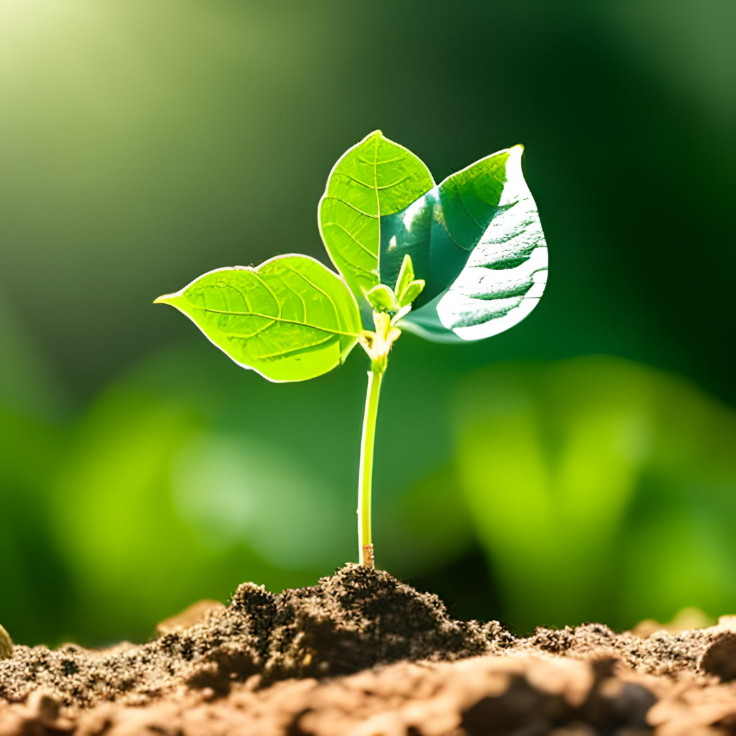Soil Health

Goal
We will provide stakeholders with resources to effectively assess soil quality and solve problems.
What is Soil Health/Quality?
Soil health may be defined as the continued capacity of soil to function as a vital living ecosystem that sustains plants, animals, and humans. A productive agricultural enterprise requires healthy soil. However, soil health is not a simple index. It is, rather a measure of the soil’s ability to support production of crops while simultaneously providing other ecosystem services. A significant challenge of soil management is the support of agricultural production while not negatively impacting other eco system services. The management of dynamic soil quality, the way soil changes with use, requires an understanding of soil structure and depth, nutrient and water holding capacity, and organic content. Different soils respond differently to management practices. Improvements in soil management may also be critical in maintaining productivity and increasing resilience in the face of a changing climate in upcoming years.
Soil Health Management Practices
- Minimize disturbances.
Soil disturbance can be the result of physical, chemical, or biological activities. Physical soil disturbance, such as tillage, results in bare and/or compacted soil that is destructive and disruptive to soil microbes, and it creates a hostile environment for them to live. Misapplication of farm inputs can disrupt the symbiotic relationships between fungi, other microorganisms, and plant roots. Overgrazing, a form of biological disturbance, reduces root mass, increases runoff, and increases soil temperature. All forms of soil disturbance diminish habitat for soil microbes and result in a diminished soil food web.
- Maximize soil cover.
Soil cover conserves moisture, reduces temperature, intercepts raindrops (to reduce their destructive impact), suppresses weed growth, and provides habitat for members of the soil food web that spend at least some of their time above ground. This is true regardless of land use (cropland, hayland, pasture, or range). Keeping the soil covered while allowing crop residues to decompose (so their nutrients can be cycled back into the soil) can be a bit of a balancing act. Producers must consider their crop rotation (including any cover crops) and residue management if they are to keep the soil covered and fed at the same time.
- Maximize biodiversity.
Biodiversity is ultimately the key to the success of any agricultural system. Lack of biodiversity severely limits the potential of any cropping system and increases disease and pest problems. A diverse and fully functioning soil food web provides for nutrient, energy, and water cycling that allows a soil to express its full potential. Increasing the diversity o f a crop rotation and cover crops increases soil health and soil function, reduces input costs, and increases profitability.
- Maximize presence of living roots.
Living plants maintain a rhizosphere, an area of concentrated microbial activity close to the root. The rhizosphere is the most active part of the soil ecosystem because it is where the most readily available food is, and where peak nutrients and water cycling occurs. Microbial food is exuded by plant roots to attract and feed microbes that provide nutrients (and other compounds) to the plant at the root-soil interface where the plants can take them up. Since living roots provide the easiest source of food for soil microbes, growing long-season crops or a cover crop following a short-season crop, feeds the foundation species of the soil food web as much as possible during the growing season.
Healthy soil is dependent upon how well the soil food web is fed. Providing plenty of easily accessible food to soil microbes helps them cycle nutrients that plants need to grow. Sugars from living plant roots, recently dead plant roots, crop residues, and soil organic matter all feed the many and varied members of the soil food web.
Indicators of Soil Health
Soil health cannot be determined by measuring only crop yield, water quality, or any other single outcome. Soil health cannot be measured directly, it is measured by evaluating indicators. Indicators can be assessed by qualitative or quantitative techniques. After measurements are collected, they can be evaluated by looking for patterns and comparing results to measurements taken at a different time or field.
- Soil organic matter: nutrient retention; soil fertility; soil structure; soil stability; and soil erosion.
2. Physical: bulk density, infiltration, soil structure and macropores, soil depth, and water holding capacity – Retention and transport of water and nutrients; habitat for soil microbes; estimate of crop productivity potential; compaction, plow pan, water movement; porosity; and tilth.
3. Chemical: electrical conductivity, reactive carbon, soil nitrate, soil pH, and extractable phosphorus and potassium – Biological and chemical activity thresholds; plant and microbial activity thresholds; and plant available nutrients and potential for nitrogen and phosphate loss.
4. Biological: earthworms, microbial biomass carbon and nitrogen, particulate organic matter, potentially mineralizable nitrogen, soil enzymes, soil respiration, and total organic carbon – Microbial catalytic potential and repository for carbon and nitrogen; soil productivity and nitrogen supplying potential; and microbial activity measure.
Additional Information
Due in part to the decline of soil health in the region, timber production has risen to be a primary economic engine in West Alabama and East Mississippi.
The timber industry in Alabama incorporates over 23 million acres, generates over $16 billion in product shipments annually, and provides over 43,000 direct jobs.
The state’s-timberland is 93% privately owned, second only to the state of Georgia. The situation is similar in Mississippi. In fact, timber is the state’s second-largest commodity with a value exceeding $1 billion annually.
Timber is the leading agricultural commodity in more than half of Mississippi’s counties (Mississippi Department of Agriculture and Commerce, 2020). In Mississippi, almost 80% of the state’s approximately 20 million acres of timberland are privately owned.
The large, industrial timber operations have easy access to trained personnel to assist in forest management and ensure maximum production. However, in the West Alabama/East Mississippi region to be served by PAIS 2.0, much smaller landowners manage smaller tracts of timber, often in conjunction with other agricultural efforts on their property.
These stakeholders, often struggling to break even, may struggle to gain the assistance they need in critical areas of forest management such as timber extraction, replanting, and prescribed burning. A program providing outreach and physical assistance will be invaluable in assisting these stakeholders in their efforts to survive and flourish.
If you would like assistance in any of these areas, please initiate process by completing PAIS Survey.
Address
Math and Science Building
University of West Alabama
Livingston, AL 35470
Call Us
Drew Busby: (205) 652-4559
Aubree Plymale: (205) 652-3840
Drew Busby: dbusby@uwa.edu
Aubree Plymale: plymalea@uwa.edu
